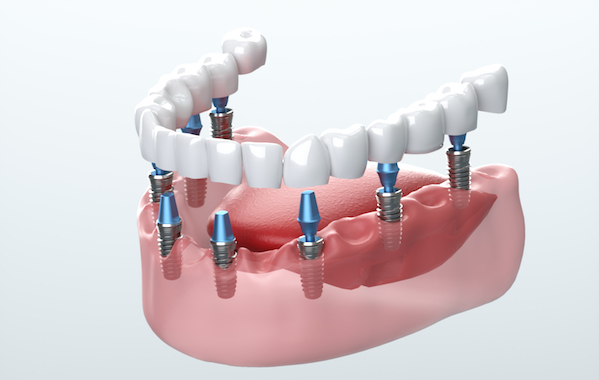Dental implants have revolutionised modern dentistry by offering a long-lasting and natural-looking solution for missing teeth. Unlike traditional dentures or bridges, implants integrate with the jawbone, providing stability and durability that mimics natural teeth.
Understanding how dental implants work can help patients make informed decisions about their oral health. This guide breaks down the entire process, from consultation to final restoration, and explains why implants are one of the best tooth replacement options available.
What Are Dental Implants?
Dental implants are artificial tooth roots made of titanium, a biocompatible material that fuses with the jawbone. They provide a stable foundation for replacement teeth, such as crowns, bridges, or dentures.
A dental implant consists of three key components:
- Titanium post – Surgically placed in the jawbone to act as a tooth root
- Abutment – Connects the implant post to the artificial tooth
- Crown or prosthetic tooth – Custom-made to match natural teeth and restore function
Step-by-Step Process of Dental Implants
1. Initial Consultation & Assessment
The first step in getting dental implants is a comprehensive dental evaluation. Your dentist will:
- Examine your teeth and gums
- Take X-rays or 3D scans to assess bone density
- Discuss your medical history to determine if you are a good candidate
Patients with sufficient bone density and healthy gums can proceed directly with the implant process. If additional procedures are needed, these will be planned before surgery.
2. Preparatory Procedures (If Needed)
Some patients require additional treatments before implant placement, such as:
- Bone grafting – If the jawbone lacks density, a bone graft may be needed to create a strong foundation. This can take several months to heal before the implant is placed.
- Tooth extraction – If a damaged or decayed tooth needs replacing, it may be removed before implant surgery.
3. Implant Placement Surgery
During surgery, the dentist or oral surgeon:
- Numbs the area with local anaesthesia
- Makes a small incision in the gum
- Drills a precise hole in the jawbone
- Inserts the titanium post into the bone
- Closes the gum tissue over the implant
Healing begins immediately after surgery, allowing the implant to integrate with the jawbone through a process called osseointegration.
4. Abutment Placement
Once the implant has fused with the bone (which can take several months), a small connector called an abutment is attached to the implant post. The gum tissue around the abutment may need a few weeks to heal before the final restoration is placed.
5. Placing the Final Restoration
The last step is attaching a custom-made crown, bridge, or denture to the abutment. The artificial tooth is designed to blend seamlessly with your natural teeth, restoring full function and aesthetics.
How Do Dental Implants Integrate with the Jawbone?
The success of dental implants relies on osseointegration, a natural process where the jawbone grows around the titanium post, securing it in place. This fusion prevents bone loss, maintains facial structure, and ensures a stable foundation for the replacement tooth.
How Long Does the Process Take?
The entire dental implant process can take anywhere from three to nine months, depending on factors such as:
- Healing time for bone grafting (if required)
- The rate of osseointegration
- The number of implants placed
For a more detailed timeline and personalised treatment plans, you can learn more about dental teeth implants.
Are Dental Implants Painful?
The procedure is performed under local anaesthesia, minimising discomfort. Patients may experience mild swelling or soreness for a few days after surgery, which can be managed with over-the-counter pain relievers and soft foods.
How to Care for Dental Implants
Maintaining dental implants is similar to caring for natural teeth:
- Brush twice daily with a soft-bristled toothbrush
- Floss regularly to remove plaque buildup
- Avoid smoking and chewing on hard objects
- Schedule regular dental check-ups for professional cleaning and monitoring
With proper care, implants can last a lifetime, making them one of the most durable and effective tooth replacement options.
Benefits of Dental Implants Over Other Options
Compared to dentures or bridges, dental implants offer several advantages:





Next Steps
Dental implants are an excellent long-term solution for missing teeth, providing a stable and natural-looking replacement. While the process requires patience, the results are worth it, restoring both function and confidence in your smile.
If you’re considering dental implants, consult a qualified dentist to determine the best treatment plan for you.



